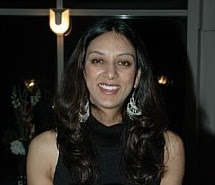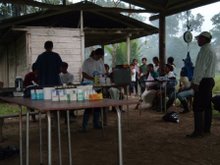This week has been all about Ayush, the alternative system of medicine in India. As I’ve already mentioned, it’s much more widely accepted by the general public than its equivalent in the U.S., and it’s even recognized by the official government of India. Because of its cultural, historical, social and health care importance, I’m glad we got the chance to learn about it.
Ayush stands for Ayurveda, Yoga and naturopathy, Unani, Siddha, and Homeopathy. We didn’t go into much detail about unani, siddha and homeopathic cures; most of our time was spent learning about ayurveda, yoga and naturopathy. But these are all drugless therapies, so some version of hot/cold manipulation, physiotherapy, and herbal treatment is probably incorporated into each one of these. Meditation and breathing exercises also have healing properties in this system.
The basic principles of Ayush are that the body has five great elements: earth, water, air, ether (space), and fire. Health is defined as the harmonious vibrations of all the elements and forces composing the human entity.
The body is said to heal itself if it is given proper scope, or nourishment. We are what we eat. An acute disease is considered to be the healing and cleansing effort of nature, while a chronic disease is the suppression of an acute disease with drugs. There is also something called the unity of disease, which is the accumulation of foreign matter or toxins inside our system. Unity of cure is defined as the elimination of accumulated toxins from the body.
Interestingly, bacteria and germs are considered secondary causes of disease, which I agree with…they are not primary causes. This is an important distinction. Sanitation, improper diet, and other causes that will be discussed below are delineated as causes of disease.
The stomach is the origin of disease, and so it is to be treated first. 99% of diseases, according to our lecturer, Dr. Nair, start in the stomach.
And the last tenet is that the cause of all diseases is one, and their treatment is also one. Dr. Nair did not specify what that one cause was, but I think it’s meant to get patients thinking holistically instead of treating each specific ailment as it comes.
On to the causes of disease. Diseases are defined as violations of nature’s laws. This seems to mean that humans cause disease by going against nature. The causes are: a) ignorance; b) indulgence; c) indifference (high ego). Dr. Nair forgot one that I think is vitally important, and that is d) poverty. It is interesting that she did not include that. Poverty is lack of access to nutritious food, clean water, etc…before many people get the chance to be ignorant, indulgent or indifferent, they are simply poor.
Obviously, modern medicine could have a field day with some of these descriptions, but the traditional system in India is simply a theory. On its side are centuries of experience, so it can’t be easily dismissed.
There are many treatments that Ayush offers for various ailments. They are best for chronic conditions such as arthritis, obesity, diabetes, asthma, migraines, sinusitis, and depression. They do massage therapy, hydrotherapy, mud treatments, nutritional counseling (and fasting), chromotherapy (color therapy), yoga, acupressure, magnetotheraphy, electrotherapy, aromatherapy and acupuncture (the last two are widely practiced but are not officially Ayush, because they aren’t traditional Indian healing methods).
A few words on ayurveda (this is basic info that can be gotten anywhere): ayurveda is literally the science of life. Veda is science, and ayur means life. There are three main aims to it: 1) the prevention of disease by adopting a healthy lifestyle; 2) the cure of ailments through treatments, medicine and surgery (yes, surgery!); and 3) rejuvenation. The two major works of literature composing ayurvedic thought are the Charaka Samhita and the Sushruta Samhita. The first is a book on general medicine, and the second is on surgery. These were written by ancient physicians as early as the 7th century, though ayurveda was undoubtedly practiced even earlier. Ayurvedic medicine has a large scope; it was shocking to hear that it includes surgery. It also has branches in ophthalmology, ENT (ear, nose and throat), pediatrics, botany, and more. I’m fascinated to learn more about it.
Another highlight of our week at Bapu was the dance lesson we got yesterday. It was just Linda and I who wanted an Odissi lesson, but in the end, several others came to watch the guruji teach us the history, culture and movements of Odissi dance. I was deemed (by myself first, and more definitively by Dr. Nair) to have both the interest and physique, but not the talent and grace, for traditional dance. I hope it’s not true, but I suspect this ordinance holds true for other types of dance, too. I guess I should stick to athletics.
Oh yes, and there has been a change in travel plans! Tomorrow is our last day of CFHI fun…we are traveling to the village of Mewat, which I’m really looking forward to. If you remember, we postponed this trip a few weeks due to Gujjar uprisings. After tomorrow, Emma goes home and Sejal and I are planning a trip to Dehradun, a hill station in the Himalayas. Then we are (theoretically, God willing) off to Mumbai, where we will stash our bags at an Aunty’s house and go on to explore Goa. Let’s see how it all works out though, God only knows!
Subscribe to:
Post Comments (Atom)





No comments:
Post a Comment